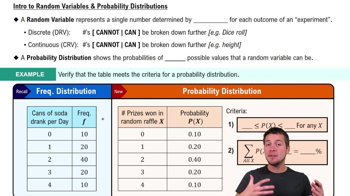Here are the essential concepts you must grasp in order to answer the question correctly.
Bootstrapping
Bootstrapping is a resampling technique used to estimate the distribution of a statistic by repeatedly sampling with replacement from the original dataset. This method allows for the assessment of the variability of a statistic, such as the mean or median, by creating multiple simulated samples. It is particularly useful when the sample size is small or when the underlying distribution is unknown.
Randomization
Randomization refers to the process of randomly assigning subjects or observations to different groups or treatments in an experiment. This technique helps to eliminate bias and ensures that the groups are comparable, allowing for valid inferences about the effects of the treatments. In the context of resampling, randomization can be used to create new samples from two independent groups to test hypotheses about their differences.
Recommended video:
Intro to Random Variables & Probability Distributions
Independent Samples
Independent samples are groups of observations that are collected separately and do not influence each other. In statistical analysis, the independence of samples is crucial for valid comparisons, as it ensures that the results from one sample do not affect the results from another. This concept is fundamental when applying both bootstrapping and randomization techniques, as it underpins the assumptions necessary for accurate statistical inference.
Recommended video:
Sampling Distribution of Sample Proportion
 Verified step by step guidance
Verified step by step guidance Verified video answer for a similar problem:
Verified video answer for a similar problem:


 6:21m
6:21m